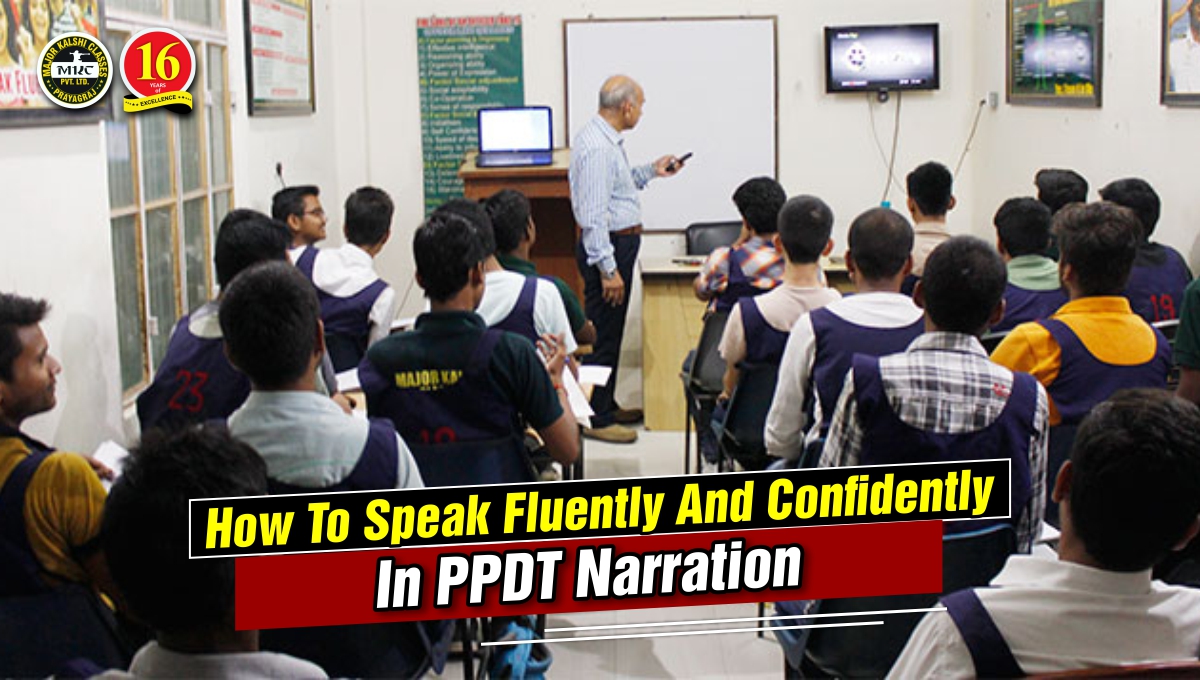How to Speak Fluently and Confidently in PPDT Narration ?
PPDT in SSB Interview : The Picture Perception and Description Test (PPDT) is administered on the first day as the second evaluation in the Stage-I screening sequence. It includes the tasks of composing a story, narrating it, and engaging in a group discussion. The narration holds equal significance alongside story writing and group discussion. Surprisingly, many of us consider public speaking or delivering a speech as our greatest fear. However, the capacity to speak in public is highly regarded as one of the most valuable skills in today’s world. In this blog , we shall know about Speak Fluently in PPDT Narration.
If you find yourself breaking out in a cold sweat or experiencing nervousness at the thought of speaking in front of others or going through an interview, you’re certainly not alone. Public speaking anxiety is believed to affect about 75 percent of adults. However, reconsidering the way we view stress could potentially enhance our physical and mental performance.
While it might be tempting to succumb to our fears, we can achieve much more in life and experience a greater sense of accomplishment by confronting them. For some individuals, conquering these fears requires only a small effort, while for others, it demands more substantial work and the utilization of techniques or strategies to manage these mental pressures.
Also Read – How To Handle Fish Market Like Situation During PPDT In SSB Interview
10 Tips that will Help You Out –
Here are ten tips to help you overcome nervousness and speak confidently during the PPDT narration:
- Acknowledge Nervousness: Understand that even experienced speakers can get nervous. Instead of trying to eliminate your jitters, channel that energy into enhancing your delivery. Keep in mind that PPDT narration is only a 1-minute task, which can be managed easily.
- Preparation Is Key: After the picture perception test, make good use of your time by practicing your story narration. This practice boosts your self-confidence and improves your performance.
- Deep Breathing: Take three slow, deep breaths through your nose in the thirty seconds before you start speaking, filling your belly. As you exhale, silently say to yourself, “Relax.” Deep breathing helps calm your nerves.
- Know Your Story: Understand what you are going to say and why you want to convey it. Remember your story thoroughly, as narrating something unrelated to your written story can negatively impact your assessment. Keep your narration centered on your story.
- Rehearse: If you have time before the narration and group discussion, practice by walking around and speaking out loud about your story. Avoid memorizing it verbatim. Instead, talk through the key points as if you were explaining them to a friend.
- Connect with Your Audience: Build a rapport with your fellow candidates by engaging in friendly conversations before your narration. Make eye contact with individual candidates as you speak. When the audience feels connected to you, your role as a narrator becomes more manageable.
- Focus on Your Audience: Overcome stage fright by shifting your focus from self-concern (“How am I doing?”) to audience-centered thinking. Pay attention to whether your audience can understand your narration and whether they are connecting with your story.
- Simplify Your Narration: Avoid attempting to include too much in your narration. Keep your narration concise and focused solely on communicating the story. Quality is more important than quantity. Use simple words to deliver an impactful story.
- Visualize Success: In the days leading up to your SSB interview, practice relaxation techniques. Find a quiet space, sit or lie down comfortably, and take slow, deep breaths. Close your eyes and visualize yourself speaking with confidence during your narration.
- Act Confident: Remember that your nervousness is not visible to others. Even if you feel anxious, project confidence through your body language and demeanor. Smile, maintain good posture, and act confidently.
- Practice: Practice your narration extensively. Practice at home in front of a mirror to work on your posture, body language, and gestures. The more you practice, the more confident and fluent you’ll become in your narrations.
PPDT in SSB Interview
The primary purpose of the SSB tests is to evaluate the leadership potential of candidates. Consequently, in virtually all practical tasks, with the exception of the Command Task, there is no designated leader. When a candidate is the first to speak during a discussion, it reflects their initiative and self-confidence. The content of their speech allows us to assess their intellect, power of expression, and reasoning. Their approach to others, how they handle differing viewpoints, and their ability to collaborate to reach a consensus reveal their capacity to influence their group, adaptability, tact, diplomacy, determination, courage, mental stamina, liveliness, and more. Hence, when a candidate remains silent, assessors are unable to evaluate their qualities. Conversely, candidates who are domineering and disruptive are perceived as self-centered and uncooperative. Even if their content is logical, such candidates may not be selected.










